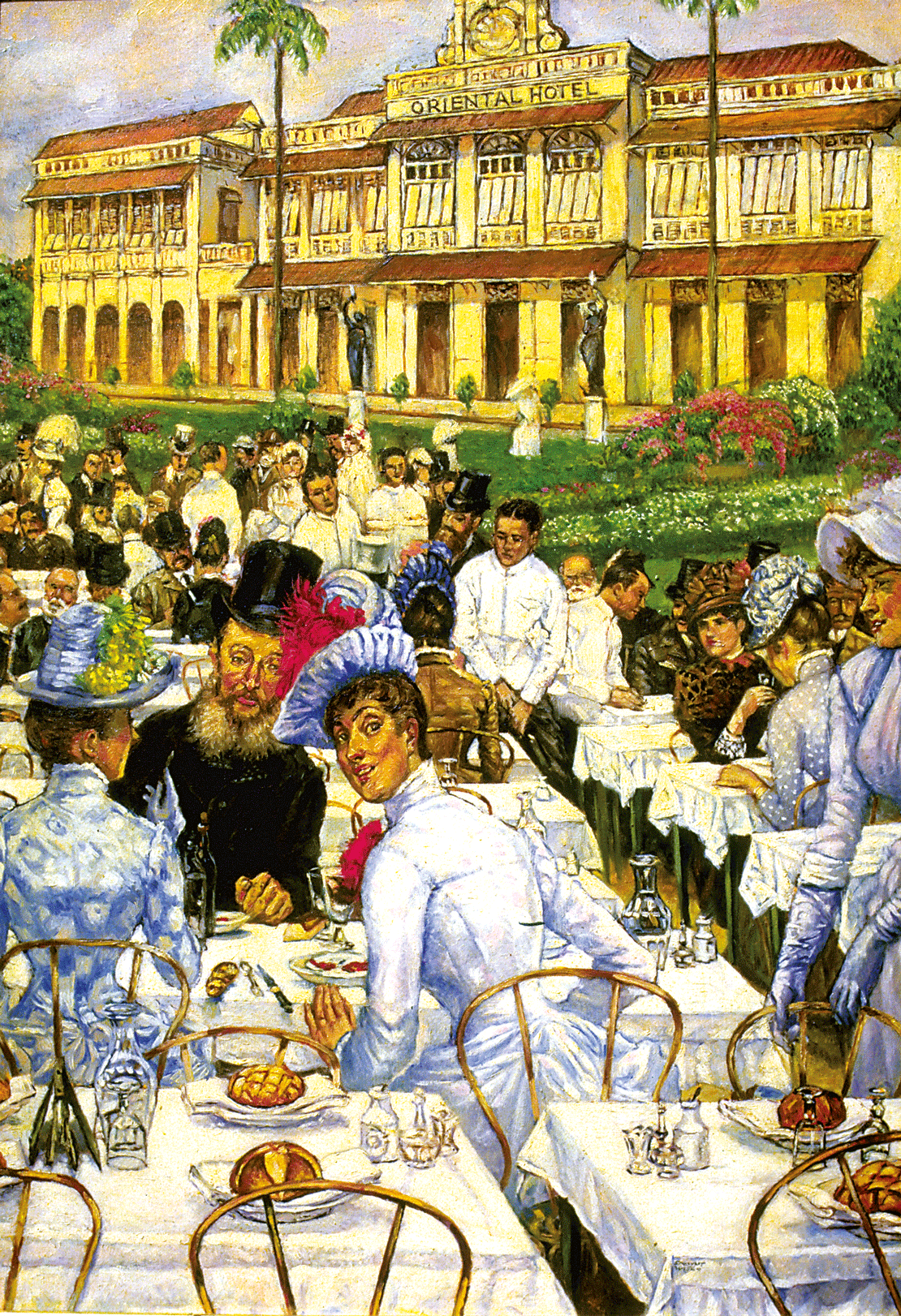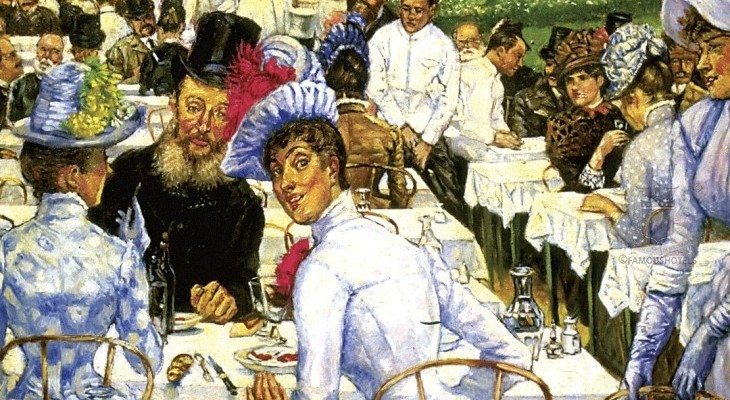Formality vs. Function: Western Attire in the Tropics, 1900
( words)
Around 1900, Western men in tropical regions like the Kingdom of Siam often dressed in outfits that, while reflecting their European origins, were far from ideal for the climate. These included heavy, woolen suits, high-collared shirts, and ties, all intended for formal wear in the European tradition. Light-coloured linen or cotton suits were a slight adaptation, but the overall effect remained formal and restrictive, with the typical look often completed with pith helmets, which were believed to offer sun protection but were cumbersome in the heat.

This is how one might imagine a Western gathering in front of the Oriental Hotel in Bangkok around 1900: high-necked dresses, stiff “father-killer” collars, and, to top it all off, hats. Painting by Australian artist Valerie O'Neill (1929-2010).
In contrast, locals dressed in loose, breathable clothing suited to the tropical climate. Traditional attire for men often consisted of wrap-around garments such as the chong kraben, a type of sarong, or other light, draped fabrics that allowed air circulation and comfort in the heat and humidity. The simplicity and breathability of local clothing made it far better adapted to the tropical environment, allowing for more comfort and freedom of movement. This contrast highlighted the Western adherence to social norms over practical adaptation, a distinction that would gradually evolve as Westerners learned to adopt elements of local dress to cope better with the heat.






